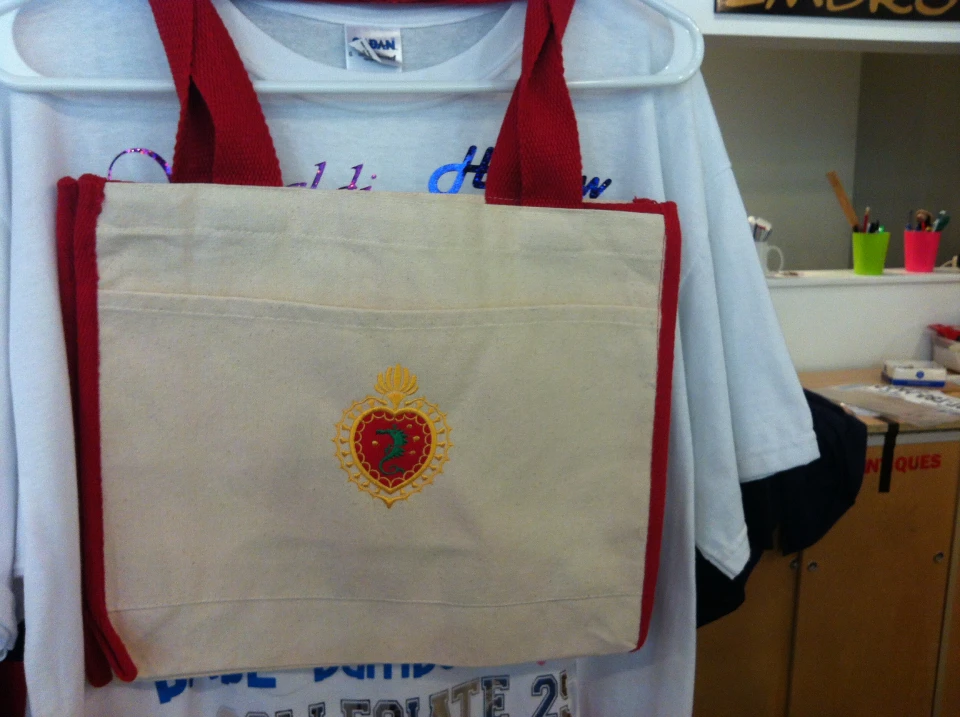The Art of Custom-made Embroidery: Opening the Keys to Creating Unique and Memorable Layouts
Embroidery, a craft steeped in tradition and creativity, holds within its complex stitches the power to change fabric right into a canvas of special expression. The keys to developing personalized needlework styles that mesmerize the eye and leave an enduring impact hinge on a fragile equilibrium of technique, creativity, and attention to information. As we look into the globe of custom embroidery, we uncover the nuanced interaction in between string choice, stitch complexity, and design personalization that boosts a simple garment to an artwork. Join us on a trip with the art of customized embroidery as we unravel the enigmas behind crafting genuinely extraordinary and unique developments.
Choosing the Right Needlework Threads
When selecting needlework strings, what key aspects should you consider to make sure the most effective results for your personalized designs? The option of needlework thread is important in establishing the final outcome of your stitched layout. Among the primary considerations is the product of the string. Different products such as cotton, polyester, rayon, and silk supply differing degrees of shine, durability, and texture. It is important to select a string material that matches the textile you are stitching on and aligns with the wanted look of the design.
Thicker threads can add measurement and appearance to your design, while finer strings are optimal for detailed details and tiny message. Additionally, taking into consideration the shade fastness and washability of the string is important to ensure that your personalized styles keep their top quality and vibrancy over time.
Checking Out Various Stitch Techniques
To dive into the world of 'Discovering Different Stitch Strategies', one should grasp the complexities and nuances that each sewing technique brings to the art of needlework. Various stitch strategies not just add aesthetic interest however additionally add to the overall structure and measurement of the design. One prominent stitch method is the satin stitch, which includes very closely packed parallel stitches to produce a smooth and glossy surface, perfect for filling out shapes and developing bold lays out.
On the other hand, the backstitch is a functional method often utilized for laying out and including fine details. It entails stitching in reverse to create a solid line of embroidery. Additionally, the French knot stitch adds a tactile aspect to layouts, excellent for developing textured accents like flower centers or attractive touches.
Discovering different stitch strategies allows embroiderers to play with light, shadow, and depth within their layouts, raising the aesthetic charm and imaginative top get redirected here quality of their needlework projects. By mastering different stitching methods, one can open endless opportunities for developing special and memorable personalized needlework items.
Incorporating Personalized Style Components
Having explored the ins and outs of various stitch methods such as the satin stitch, backstitch, and French knot, the focus currently shifts in the direction of incorporating customized design components in customized needlework projects. Personalized style components play a crucial duty in making needlework tasks really distinct and remarkable.
One more method to incorporate customized style elements is by consisting of symbols or concepts that hold special definition to the recipient or mirror their passions and character. For example, including a favorite blossom, pet, or my latest blog post hobby-related symbol can make the needlework design a lot more meaningful and individualized. Furthermore, picking colors that resonate with the recipient or straighten with the intended motif can even more improve the customization of the embroidery job.
Mastering the Art of Color Sychronisation
One key facet of color control is understanding shade theory. This includes knowing how various shades communicate with each various other, the emotions they convey, and exactly how they can be incorporated to produce aesthetically appealing styles. By applying color concept concepts, embroiderers can create unified shade combinations that enhance the general appearance of the design.
Furthermore, focusing on contrast is essential in color control. Making use of contrasting colors can assist specific aspects of the design pop, enhance readability, and develop a visually dynamic embroidery piece. By understanding the art of color sychronisation, embroiderers can raise their styles and develop remarkable items that reverberate with customers and viewers alike.
Enhancing Texture With Advanced Embroidery Stitches

Bullion knots, on the other hand, can be made use of to develop twisted, ropelike aspects that add an extravagant feeling to the needlework. Experimenting with these advanced needlework stitches permits you to push the boundaries of traditional needlework and create genuinely special and visually appealing appearances in your layouts.
Final Thought
Finally, the art of personalized embroidery entails a mix of picking the ideal strings, discovering numerous stitch methods, incorporating personalized style elements, understanding shade control, and improving texture with innovative stitches. By comprehending and executing these crucial elements, embroiderers can create distinct and memorable styles that showcase their imagination and skill. Needlework enthusiasts can open the tricks to creating gorgeous and custom pieces that stick out and leave a long lasting impression.